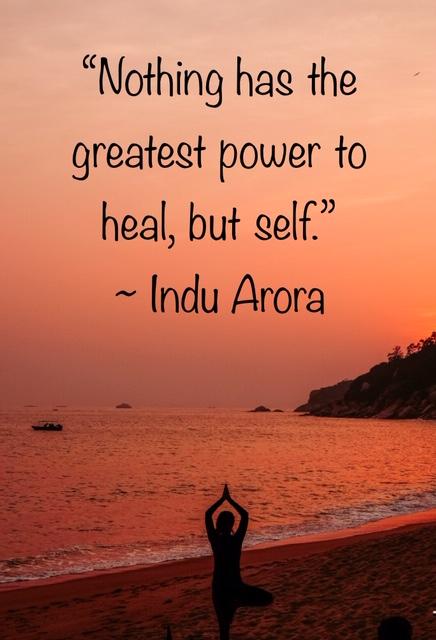
This is my fourth installment in a series of blogs I’m dedicating to the ancient sister science of Yoga—Ayurveda. Here are links to the first three in case you missed them:
The Science of Life: How to hone and own your best assets
A very important aspect of an Ayurvedic lifestyle includes a daily routine (dinacharya). Do you notice when your routine is disrupted, you are more easily thrown off balance and more easily prone to stress? Then convincing you of the importance of a daily routine should be easy!
A daily routine is of utmost importance not just to maintain balance but also if you are looking to create change in your body, mind and soul. Kind of like meditating one day isn’t going to have a long-term effect, right?
Out of all the doshas, Vata is the one who is most resistant to change due to Vata’s “mobile” quality. (See the first blog in this series to determine your predominant dosha as well as which dosha might need some extra balance). Remember similarities aggravate and opposites sooth. So routine is especially important for Vata!
I should mention here that this mobile quality is involved in most, if not all, disease processes because it’s moving into various areas of the body. But that’s a huge topic on the stages of disease. It’s enough to say that if your dosha is predominantly Vata, it will be easier for you to be thrown off balance and thus invite various disorders into your system. So, again, routine is uber-important!
We talked a bit about the Ayurvedic clock two weeks ago. Following the clock helps with your daily rhythm, which aids digestion, quality sleep, regular bowel movements, and stress levels. Need I go on? We covered waking up early before the sun rises as well as best times to eat to aid digestion, suggested meditation times, best times and activities to go to sleep and have good sleep, etc. using the Ayurvedic clock. This is all part of your daily routine.
You probably already include at least a couple other of the most essential parts of a daily routine, like brushing your teeth, having a regular bowel movement, bathing, exercising, and wearing clean clothes. Notice that what you do habitually is easy to remember. So for the topics I cover here that aren’t part of your habitual routine, fit them in around those that are to get a rhythm while incorporating them into your life. Habits are great places to place new activities you want to include.
If you’re reading this, you may also have a regular meditation/mindfulness practice and/or yoga practice. See the blog series prior to this one on simple rituals to bring Spirit into your life if you’d like some suggestions on fitting mindfulness in. And, of course, I’m here to help if you’d like suggestions for creating your own daily home practice.
Scrape your tongue
So what’s left, you might ask? The first one I’ll cover may take a bit of getting used to; but trust me, once you’ve started doing it, you’ll wonder why you didn’t start sooner! It’s like flossing my teeth now. I don’t feel right if I don’t. Have problems with bad breath? All gone when you start scraping your tongue! Scraping the tongue also stimulates internal organs, aids your digestion, and—very functionally—removes dead bacteria (bad breath be gone!). Do this first thing in the morning before consuming anything else.
There is a whole system of tongue diagnosis in Ayurveda which is way too deep to cover here and I’m definitely still in the learning stages there! I’ll just mention that the tongue is a like a hologram for the bodily organs, similar to your ears, hands, and feet. You’re probably familiar with reflexology maps for these. Well the tongue is a “map” for the organs, the doshas (see the first blog in the series for more on doshas) as well as your digestive fire. Without getting too complicated, there’s even areas on your tongue that experience the six tastes we talked about last week.
Bottom-line? Scraping your tongue affects all of the above! So what are you waiting for? A stainless steel scraper is suitable for any dosha but love my copper scraper. I like the fact that copper “disinfects itself” because it’s bacteria-resistant. Copper also provides important enzymes needed for healthy microbes in the mouth to survive.
The scrapers are U-shaped. You take the “U” and gently place it on the back of the tongue and then scrape from back to front 5-10 times. I’ve read various numbers. And if you have a real problem with bad breath, you might want to scrape after every meal. I personally do this practice in the AM only.
Drink water
An easy one you don’t need an introduction to would be to drink a glass (or two) of room temperature water upon rising. And if you’re all in, letting the water sit in a pure copper cup the night before helps flush the system out (GI tract, kidneys etc.). Ayurveda doesn’t recommend addictive drinks like coffee or tea, but if you must have those, it’s suggested to wait an hour or more after the water. Full disclosure, I love my coffee.
Oil Swish
Holding oil in your mouth, or swishing the oil strengthens our teeth, gums and jaw. Vasant Lad, MASc says this practice also “improves the voice and removes wrinkles from the cheeks”. Warm sesame oil is commonly used but you can also get various combinations of oils. Banyan Botanicals has a combo of sesame, coconut and herbs.
Use 2-3 teaspoons of oil, gently swishing around, pulling the oil through the teeth for a few minutes (some say up to 20 minutes!). The longer you do the swish, the more benefits you experience. Remember my suggestion to do it around a habit? I’m reading that swishing as you shower might be a good time. Some texts suggest spitting the oil out in the trash vs. the sink to avoid drain clog—word to the wise. Vasant Lad, MASc also suggests doing this practice twice daily. I have yet to be consistent with this practice but I’m trying!
Nasal drops (Nasya)
A Nasya oil lubricates the nostrils. Doing this especially when you’re in a dry hotel room really helps! So if you have trouble doing this daily, try packing Nasya oil in your travel bag. You won’t regret it! I do a simpler version of using just a couple of drops of Nasya oil in my palm, dipping my little pinky in the oil and lubricating the inside tip of my nostrils.
In addition to lubricating our nostrils, which is enough for me, this practice cleans the sinuses, enhances the voice, and improves vision and mental clarity. “Our nose is the doorway to the brain, so nose drops nourish prana (life force energy) and unfold intelligence.” Source: The Textbook of Ayurveda, Volume 3, by Vasant Lad, MASc
The full description, again if you’re all in, would involve lying on your back cushioning your shoulders so your head tilts back (perhaps hanging the head off the bed) and dropping 3-5 drops of warmed Nasya oil (Vasant Lad, MASc suggests warm ghee will also work) into each nostril.
There are some contraindications for this practice: It’s not meant for young children (although Cate Stillman’s Living Ayurveda 9-month training suggested doing the pinky dip I described above and even doing the same for the ear opening tip.) Pregnancy, menstruation, immediately after exercise, while intoxicated, on a full stomach, digestive issue like diarrhea or vomiting, fever, hypoglycemia and dehydration are also contraindicated. (Source: The Textbook of Ayurveda, Volume 3, by Vasant Lad, MASc)
More oil to the head and body (Abhyanga)
This practice is one of my absolute favorites but remember, I’m a Vata dominant dosha so I have that “dry” quality. So “oily” is an opposite and very soothing. And I practice this after I shower vs. before as often recommended. I suspect many would prefer not dressing with oil on them to keep their clothes from getting oil. Oiling your body just before bed is also supposed to help you sleep soundly.
I have been leaving bhringaraj oil on my hair for several hours the day I’m going to wash my hair to help reverse hair fall out I was experiencing due to hypothyroidism as well as menopause. Mahanarayan oil is my oil of choice for after shower since it helps with muscles and joints. It balances all the doshas but especially Vata. Vasant Lad, MASc recommends warming the oil and using sesame or almond for Vata, sunflower or coconut oil for Pitta and mustard or corn oil for Kapha. If there’s a favorite oil of yours, don’t let the recommendations stop you from using your oil of choice, in my opinion. I have a jasmine infused Vitamin E oil I also use.
Applying oil to your body is a practice of self-love. It will improve your circulation, moisten and condition the skin and is a great de-stressor in this day of go, go. The Sanskrit word for oil means love. Enough said.
There are other practices we could go into for your daily routine but let’s start here and pick something that resonates with you. Be good to yourself. The more you take the time for self-care, the more your body will respond positively. The more you are able to relax with these practices, the more tools you are providing your body to rejuvenate and heal from within. That’s the Ayurveda way—heal from within. Please let me know if I can help you in any way on your journey.


